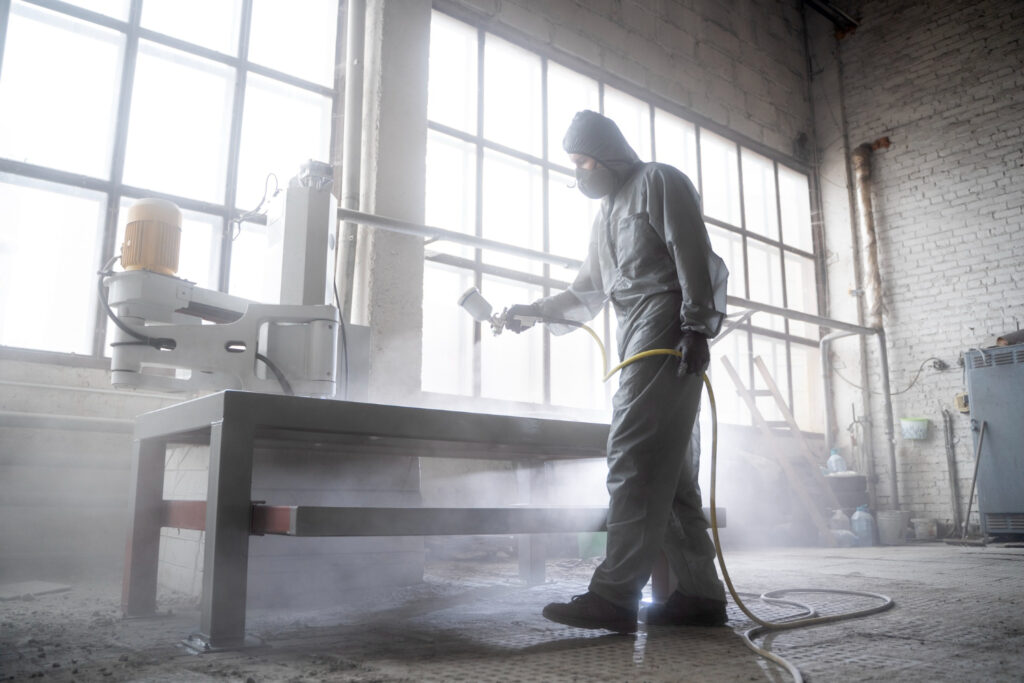Industrial paint booths are essential for various manufacturing processes, providing controlled environments for painting operations. However, ensuring the safety of personnel and compliance with regulatory standards is paramount in these environments. In this comprehensive guide, we’ll explore the key safety regulations governing industrial paint booths and provide valuable insights into navigating them effectively.
Understanding Regulatory Requirements
Safety regulations for industrial paint booths are established by regulatory bodies such as OSHA (Occupational Safety and Health Administration) and NFPA (National Fire Protection Association). These regulations encompass various aspects of paint booth design, operation, and maintenance to ensure the safety of workers and prevent potential hazards. Familiarize yourself with relevant OSHA and NFPA standards, including OSHA Standard 1910.107 for spray finishing using flammable and combustible materials and NFPA Standard 33 for spray application using flammable and combustible materials.
Compliance with Fire Safety Standards
Fire safety is a critical concern in industrial paint booth operations due to the potential risks associated with flammable and combustible materials. Ensure that your paint booth complies with NFPA Standard 33, which outlines requirements for fire protection measures, including the installation of fire suppression systems, adequate ventilation to prevent the accumulation of flammable vapors, and proper grounding and bonding of equipment to prevent static electricity buildup. Conduct regular inspections and maintenance to identify and address fire hazards promptly.
Ventilation and Air Quality Standards
Proper ventilation is essential for maintaining a safe and healthy work environment in industrial paint booths. OSHA Standard 1910.107 specifies requirements for ventilation systems to control hazardous airborne contaminants and ensure adequate airflow during painting operations. Ensure that your paint booth ventilation system meets the minimum airflow rates and velocity requirements specified by OSHA standards. Monitor air quality regularly to detect any deviations from acceptable levels and take corrective actions as needed to mitigate health risks.
Personal Protective Equipment (PPE) Guidelines
Personal protective equipment (PPE) plays a crucial role in ensuring the safety of workers in industrial paint booth environments. OSHA Standard 1910.107 outlines requirements for the use of PPE, including respirators, protective clothing, gloves, and eye protection, to minimize exposure to hazardous materials and prevent occupational injuries. Provide appropriate training and instruction to workers on the proper use and maintenance of PPE and ensure that PPE is readily available and properly fitted for each individual.
Hazardous Material Handling and Storage
Proper handling and storage of hazardous materials are essential for preventing accidents and environmental contamination in industrial paint booth facilities. Comply with OSHA regulations for the safe handling, storage, and disposal of flammable and combustible materials, including paints, solvents, and cleaning agents. Store hazardous materials in designated areas equipped with appropriate containment measures, such as secondary containment systems and spill kits, to prevent leaks and spills. Implement strict protocols for handling and transferring hazardous materials to minimize the risk of accidents and exposure.
Employee Training and Safety Awareness Programs
Employee training and safety awareness programs are vital components of a comprehensive safety management system for industrial paint booth operations. Provide comprehensive training to workers on safety procedures, emergency response protocols, and hazard recognition and mitigation strategies. Conduct regular safety meetings and drills to reinforce safety practices and ensure that workers are prepared to respond effectively to potential emergencies. Encourage active participation and feedback from employees to foster a culture of safety and continuous improvement.
Conclusion
Navigating safety regulations for industrial paint booths requires a thorough understanding of regulatory requirements and a commitment to compliance and best practices. By adhering to OSHA and NFPA standards, implementing robust safety measures, and providing comprehensive training and education to workers, you can create a safe and productive work environment in your paint booth facility. Remember that safety is everyone’s responsibility, and proactive measures are essential for protecting the well-being of workers and maintaining regulatory compliance.

